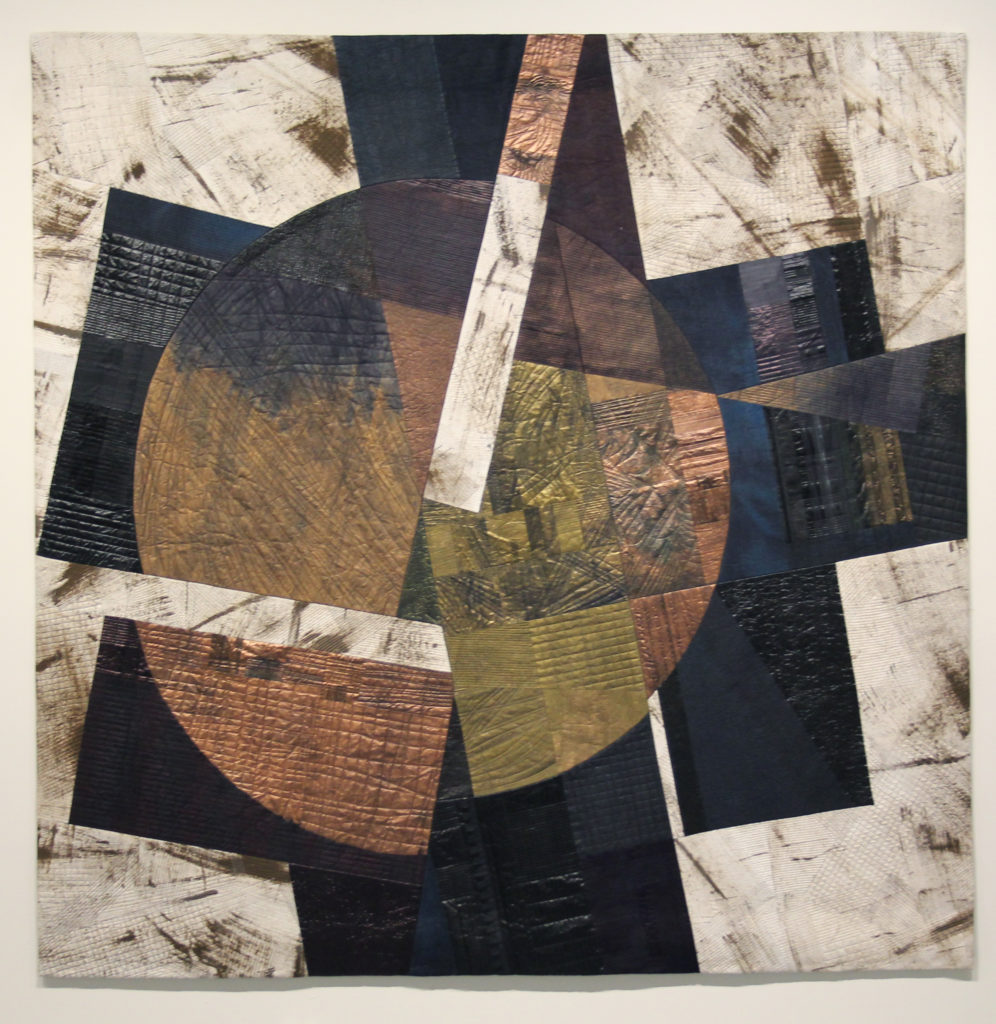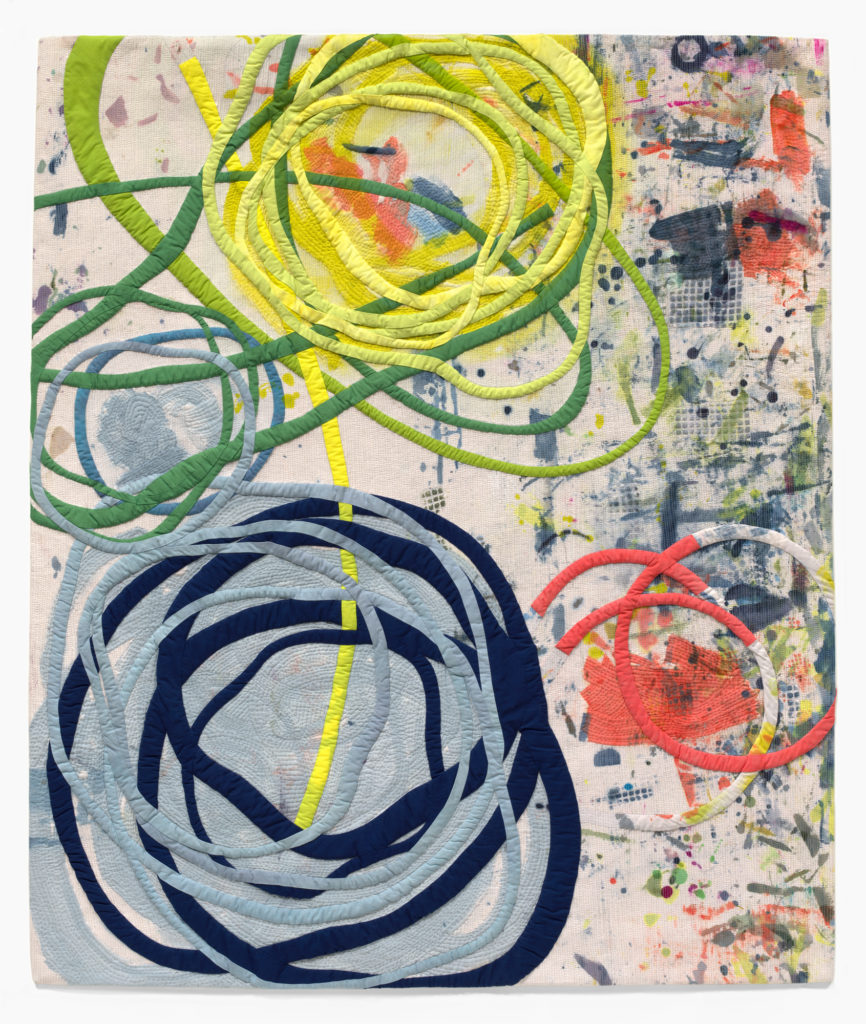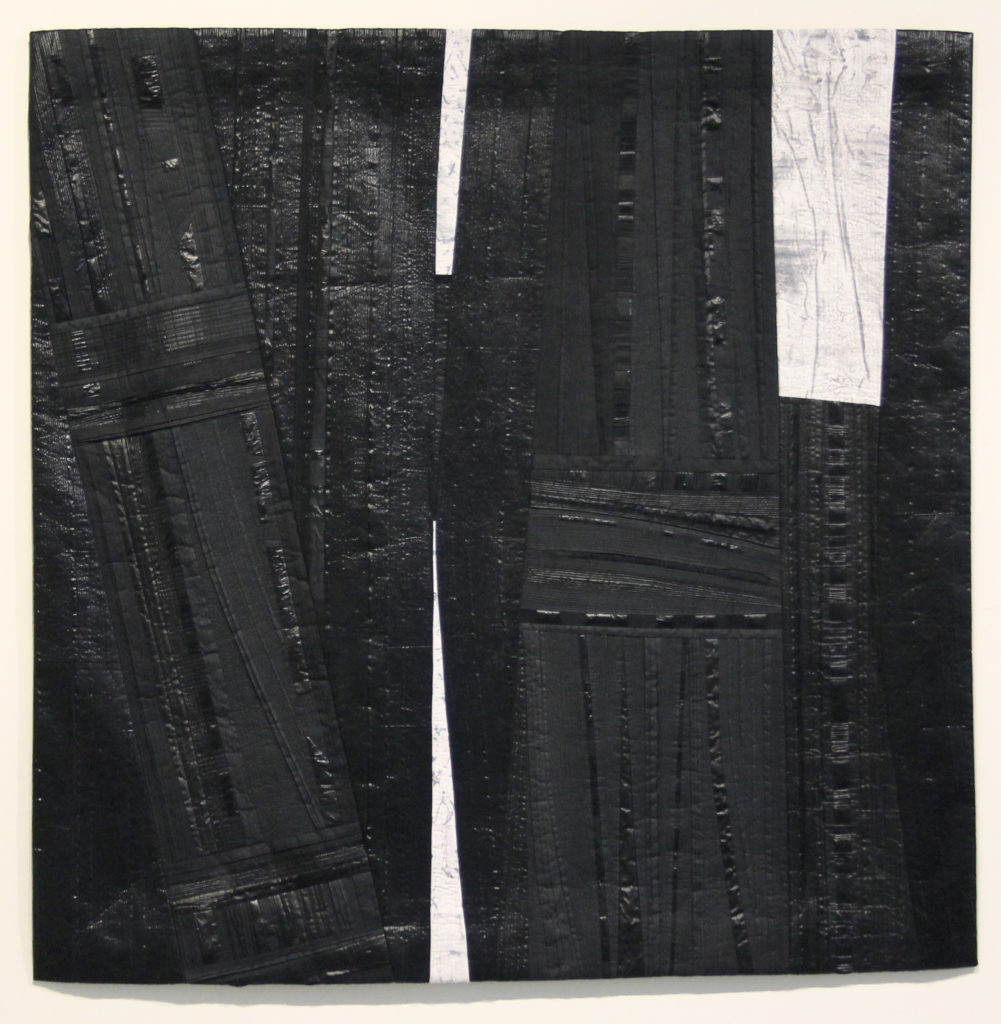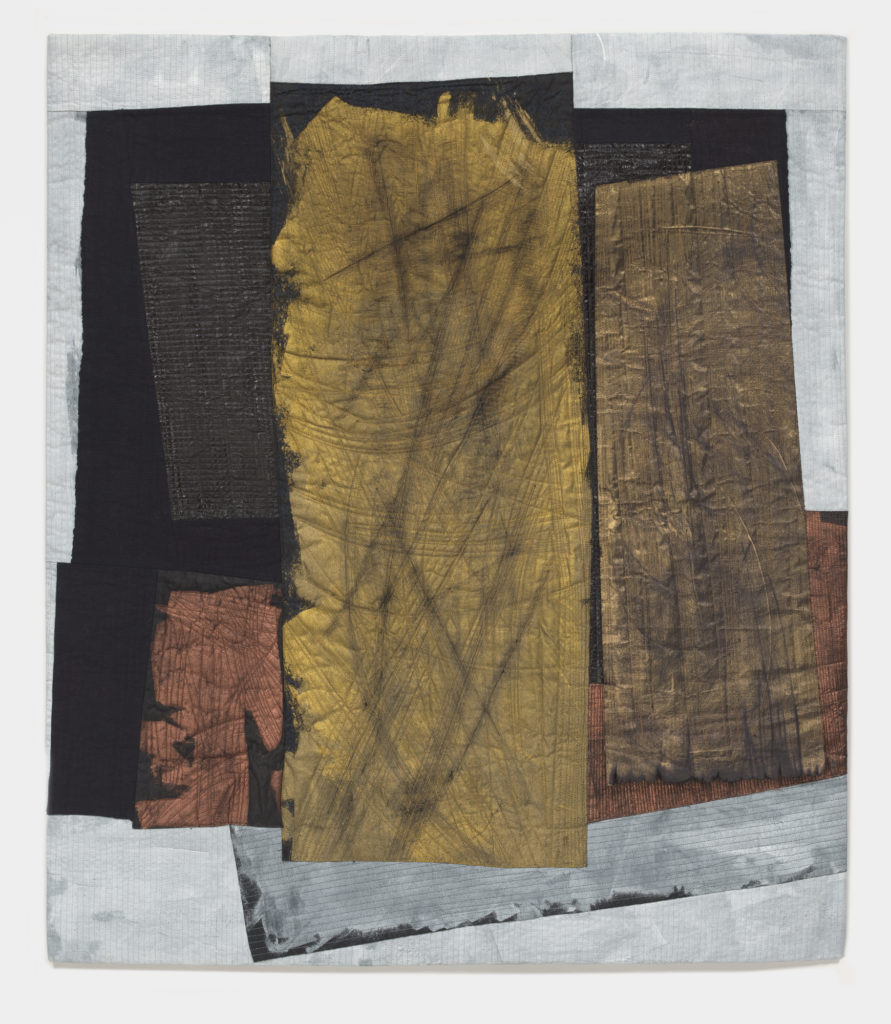Fiber artist Judy Kirpich pours her emotions into her work

She uses a unique material in her more recent work
Creating is artist Judy Kirpich’s best way of coping with her emotions: Anxiety over running a 35-person graphic arts business during the Great Recession. Anticipation and excitement over retirement. Family health issues, including traumatic brain injury, depression and cancer.
“I developed a technique of slashing through fabric multiple times and a unique method of insetting circles,” she said. “This proved to be very therapeutic and helped me both emotionally and physically deal with my complicated feelings.”
It also helped her create art quilts that draw viewers in with complex images of overlapping circles and layers of fabric that look like a cross between material and metal. Kirpich’s solo exhibit of her artwork, “Emotional Constructs,” is on display at the Schweinfurth Art Center in Auburn, NY, through Jan. 8, 2023.

“I can lose myself in my work; it is a quiet place,” Kirpich said. “And even if the original concept for my art derives from an emotional basis, the experience of creating a piece is therapeutic. I am happiest when I am working in my studio, even if a piece I am working on has a foundation in pathos.”
That emotion comes from a very personal place: dealing with the loss of her mother and mother-in-law to Alzheimer’s. Many of the pieces in Kirpich’s “Memory Loss” series feature progressions of circles that change from black to white.
“I think the series represents my own inner turmoil as well as the confusion faced by my mom in particular,” she said. “There is confusion and eventually death, and this is captured by the backgrounds moving from black to white. I was able to show her my work, and on some level she understood that she was at the center of this series, though she was not really able to grasp it.”
Kirpich began her interest in sewing as many do, making clothes. “I made absolutely everything I put on my back,” she said. “Sewing clothes for me and my entire family was fine, but honestly I could not fit one more outfit into my closet.”
That’s when she picked up a back issue of Patterns Magazine – “No. 35, I think” – and saw a profile of renown fiber artist Nancy Crow, who is known for her modern quilts.
“It was an epiphany,” she said. “I thought sewing quilts was rather boring and I hated the repetition in more traditional quilts. That is, until I became a devotee of Nancy.” Kirpich immediately signed up for a class and still visits the Crow Barn regularly.
Another influence on Kirpich’s art is the 37 years she ran Grafik, a design and branding company she founded in 1978, which she credits with instilling discipline. “My studio practice is very rigorous. I am a maniac about making deadlines, and am still patterned to answer every email or phone call within five minutes,” she said.
Kirpich noted that many quilt artists, including Paula Kovarik and Elizabeth Brandt, come from a graphic design or illustration background, speculating that the shift came after the introduction of computers. “We all loved the tactile experience of putting together a mechanical: the precision, the line work, the exactness needed, which was lost when the field gravitated to computers,” she said.
Perhaps the tactile quality is why Kirpich is drawn to the unique cloth she uses in her current art quilts.

She purchases the material from a tribal ethnic group in China, which makes it primarily for their clothing. They dye and dry their homespun cotton with indigo several times. Then soak it in a brew of ox or pig blood, raw hide, persimmon skins, and pounded chestnut shells. When the fabric is dry, one side is covered with egg whites and then the cloth is beaten with a heavy wooden mallet, resulting in a sheen on one side of the cloth.
“It has taken me many years to understand how to work with this fabric,” she said. “For one thing, there is not a consistency between batches, and all the fabric is only 13 inches wide. While it has many wonderful characteristics, it is also a challenge to sew larger pieces.”
The material comes in different shades of black and brown. To create a greater range in color, Kirpich has been experimenting with painting and distressing the fabric, still keeping the metallic feel.
“There is a unity between the complexity of Judy’s piecing, the heavily worked dyed surface of the indigo fabrics, and the concepts that her work embodies,” said Schweinfurth Program Director Davana Robedee. “These pieces evoke a sense of opposing values: balance/unbalance, breaking apart apart/coming together.”
Color has been creeping into Kirpich’s artwork recently. Pieces in her “Indigo Composition” series include maroons, golds, and even some blues and greens. Numbers 3 through 14 in that series are self-portraits.

“To most people, I seem very strong and self-sufficient,” she said. “Only upon closer inspection can you see the detail, complexity, and fragility of my emotional base. Like this fabric, for the careful observer there is a lot to discover.
“In 2021, my sister, brother and I moved my mother from her house of 46 years to an assisted living memory care unit,” Kirpich continued. “In less than a week, we dismantled a house that was built by my father and full of my mother’s art. It was an upsetting experience. It was the only house I knew as a child, and was full of family memories. ‘Indigo Composition Nos. 15-20’ seek to capture the jarring emotions I felt in the aftermath of the move and during that difficult week.”
More color – and less emotion – may be in Kirpich’s future art. “I am currently working on the beginnings of a new series reflecting a trip to Iceland that may have some intense greens,” she said. “In this case, I do not see an emotional component as the starting point, which is new for me.”
Watch a video of Judy narrating a tour of her exhibit, Emotional Constructs.
